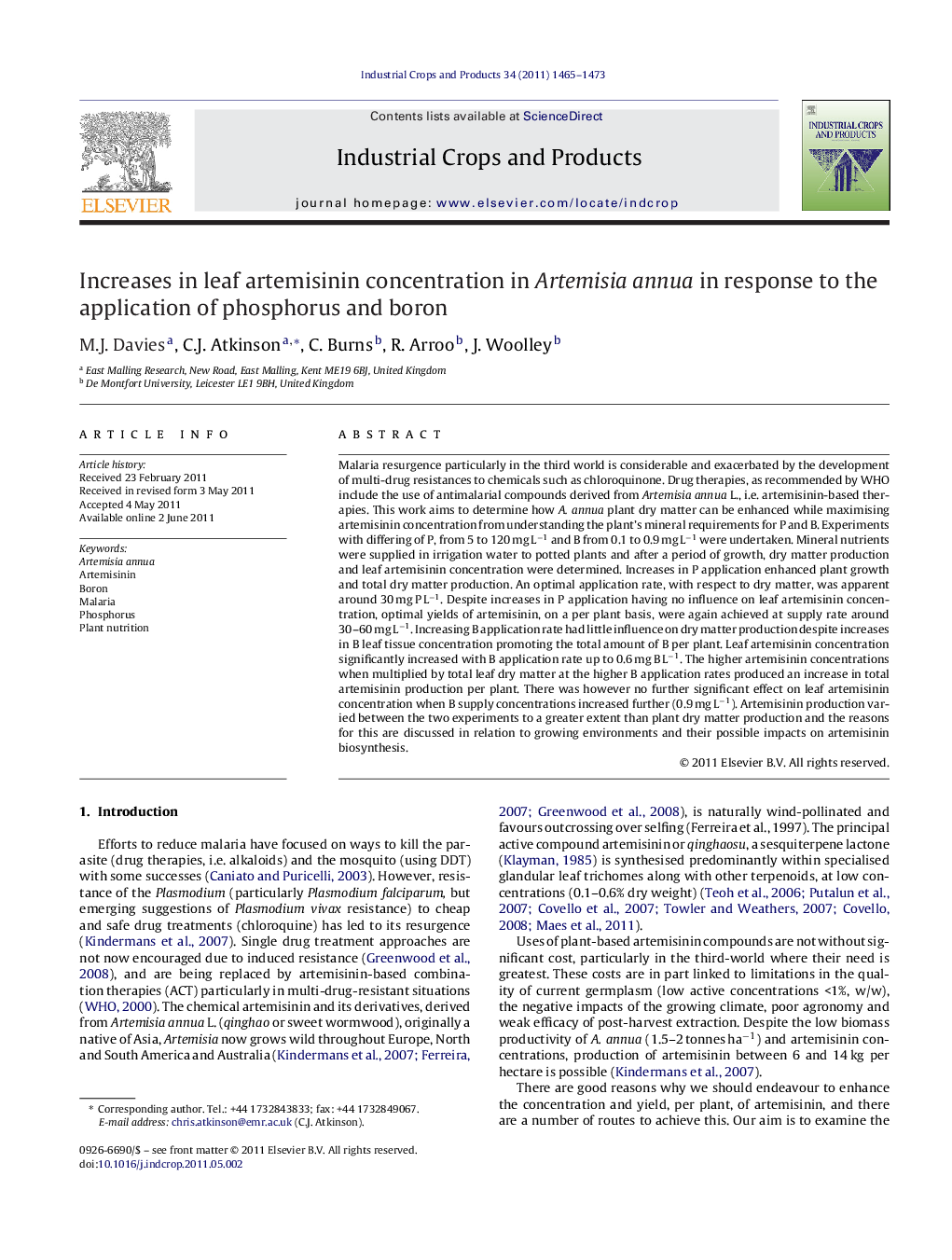| کد مقاله | کد نشریه | سال انتشار | مقاله انگلیسی | نسخه تمام متن |
|---|---|---|---|---|
| 4514494 | 1322213 | 2011 | 9 صفحه PDF | دانلود رایگان |

Malaria resurgence particularly in the third world is considerable and exacerbated by the development of multi-drug resistances to chemicals such as chloroquinone. Drug therapies, as recommended by WHO include the use of antimalarial compounds derived from Artemisia annua L., i.e. artemisinin-based therapies. This work aims to determine how A. annua plant dry matter can be enhanced while maximising artemisinin concentration from understanding the plant's mineral requirements for P and B. Experiments with differing of P, from 5 to 120 mg L−1 and B from 0.1 to 0.9 mg L−1 were undertaken. Mineral nutrients were supplied in irrigation water to potted plants and after a period of growth, dry matter production and leaf artemisinin concentration were determined. Increases in P application enhanced plant growth and total dry matter production. An optimal application rate, with respect to dry matter, was apparent around 30 mg P L−1. Despite increases in P application having no influence on leaf artemisinin concentration, optimal yields of artemisinin, on a per plant basis, were again achieved at supply rate around 30–60 mg L−1. Increasing B application rate had little influence on dry matter production despite increases in B leaf tissue concentration promoting the total amount of B per plant. Leaf artemisinin concentration significantly increased with B application rate up to 0.6 mg B L−1. The higher artemisinin concentrations when multiplied by total leaf dry matter at the higher B application rates produced an increase in total artemisinin production per plant. There was however no further significant effect on leaf artemisinin concentration when B supply concentrations increased further (0.9 mg L−1). Artemisinin production varied between the two experiments to a greater extent than plant dry matter production and the reasons for this are discussed in relation to growing environments and their possible impacts on artemisinin biosynthesis.
► This paper describes agronomic mineral studies, which ensure maximal yields of artemisinin per plant from Artemisia annua.
► A. annua plant dry matter was enhanced and artemisinin concentration maximised by manipulation of the plant's requirements for phosphorus and boron.
► Increases in phosphorus application enhanced growth and total dry matter production without influencing leaf artemisinin concentration. Optimal yields of artemisinin, on a per plant basis, were achieved with respect to phosphorus application.
► Increasing boron application rate had little influence on dry matter production but increased leaf artemisinin concentration significantly.
► Higher artemisinin concentrations when multiplied by total leaf dry matter at the higher boron application rates increased in total artemisinin production per plant.
Journal: Industrial Crops and Products - Volume 34, Issue 3, November 2011, Pages 1465–1473